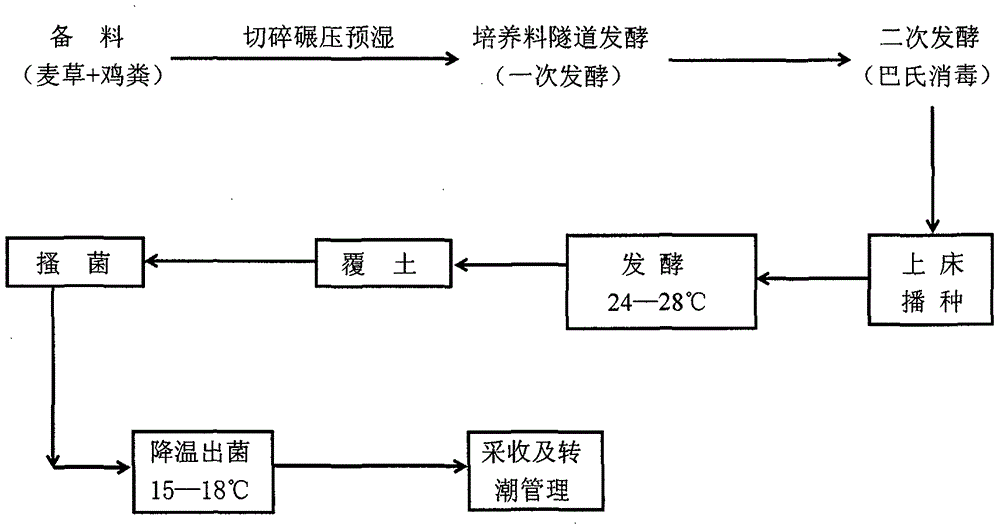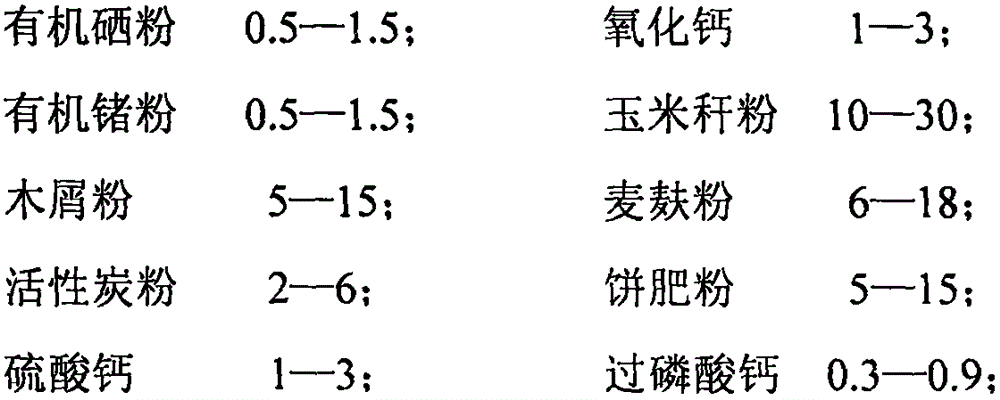Method for industrial cultivation of base materials used for selenium-rich domestic fungi from industrial and agricultural waste residues, straw and manure
A selenium-enriched edible fungus, industrial and agricultural technology, applied in agriculture, chemical industry, fertilizer made of biological waste, etc., can solve the problem of low nutritional value of animal feed, enhance market competitiveness, change influence, and reduce labor intensity Effect
- Summary
- Abstract
- Description
- Claims
- Application Information
AI Technical Summary
Problems solved by technology
Method used
Image
Examples
Embodiment 1
[0061] Embodiment 1: a kind of industrial and agricultural waste residue straw manure industrial cultivation selenium-rich edible fungus base material is characterized in that: it is suitable for cultivating oyster mushroom edible fungus base material by steel slag and corn stalks, and is composed of the following mass proportioning %
[0062]
Embodiment 2
[0063] Example 2: A base material for industrial cultivation of selenium-enriched edible fungi using industrial and agricultural waste residue, straw and manure. It is characterized in that the base material suitable for cultivating mushroom edible fungi is made of waste alkali slag and sweet sorghum stalks. Composition % according to the following mass parts proportioning
[0064]
Embodiment 3
[0065] Embodiment 3: A base material for industrial cultivation of selenium-enriched edible fungi with industrial and agricultural waste residue, straw, manure, which is characterized in that: it is composed of waste ferromanganese slag and bean stalks suitable for cultivating Bailing mushroom edible fungus, and is composed of the following proportions by mass %
[0066]
PUM
| Property | Measurement | Unit |
|---|---|---|
| thickness | aaaaa | aaaaa |
Abstract
Description
Claims
Application Information
 Login to View More
Login to View More - R&D
- Intellectual Property
- Life Sciences
- Materials
- Tech Scout
- Unparalleled Data Quality
- Higher Quality Content
- 60% Fewer Hallucinations
Browse by: Latest US Patents, China's latest patents, Technical Efficacy Thesaurus, Application Domain, Technology Topic, Popular Technical Reports.
© 2025 PatSnap. All rights reserved.Legal|Privacy policy|Modern Slavery Act Transparency Statement|Sitemap|About US| Contact US: help@patsnap.com



